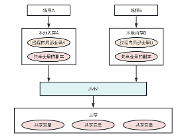一站式统一返回值封装、异常处理、异常错误码解决方案—最强的Sping Boot接口优雅响应处理器 | 京东云技术团队
作者:京东物流 覃玉杰
1. 简介
Graceful Response是一个Spring Boot体系下的优雅响应处理器,提供一站式统一返回值封装、异常处理、异常错误码等功能。
使用Graceful Response进行web接口开发不仅可以节省大量的时间,还可以提高代码质量,使代码逻辑更清晰。
强烈推荐你花3分钟学会它!
Graceful Response的Github地址: https://github.com/feiniaojin/graceful-response ,欢迎star!
Graceful Response的案例工程代码:https://github.com/feiniaojin/graceful-response-example.git
2. Spring Boot Web API接口数据返回的现状
我们进行Spring Boo Web API接口开发时,通常大部分的Controller代码是这样的:
public class Controller {
@GetMapping("/query")
@ResponseBody
public Response query(Parameter params) {
Response res = new Response();
try {
//1.校验params参数,非空校验、长度校验
if (illegal(params)) {
res.setCode(1);
res.setMsg("error");
return res;
}
//2.调用Service的一系列操作
Data data = service.query(params);
//3.执行正确时,将操作结果设置到res对象中
res.setData(data);
res.setCode(0);
res.setMsg("ok");
return res;
} catch (BizException1 e) {
//4.异常处理:一堆丑陋的try...catch,如果有错误码的,还需要手工填充错误码
res.setCode(1024);
res.setMsg("error");
return res;
} catch (BizException2 e) {
//4.异常处理:一堆丑陋的try...catch,如果有错误码的,还需要手工填充错误码
res.setCode(2048);
res.setMsg("error");
return res;
} catch (Exception e) {
//4.异常处理:一堆丑陋的try...catch,如果有错误码的,还需要手工填充错误码
res.setCode(1);
res.setMsg("error");
return res;
}
}
}这段代码存在什么问题呢?真正的业务逻辑被冗余代码淹没,可读性太差。
真正执行业务的代码只有
Data data=service.query(params);其他代码不管是正常执行还是异常处理,都是为了异常封装、把结果封装为特定的格式,例如以下格式:
{
"code": 0,
"msg": "ok",
"data": {
"id": 1,
"name": "username"
}
}这样的逻辑每个接口都需要处理一遍,都是繁琐的重复劳动。
现在,只需要引入Graceful Response组件并通过@EnableGracefulResponse启用,就可以直接返回业务结果并自动完成response的格式封装。
以下是使用Graceful Response之后的代码,实现同样的返回值封装、异常处理、异常错误码功能,但可以看到代码变得非常简洁,可读性非常强。
public class Controller {
@GetMapping("/query")
@ResponseBody
public Data query(Parameter params) {
return service.query(params);
}
}3. 快速入门
3.1 引入maven依赖
graceful-response已发布至maven中央仓库,可以直接引入到项目中,maven依赖如下:
<dependency>
<groupId>com.feiniaojin</groupId>
<artifactId>graceful-response</artifactId>
<version>2.0</version>
</dependency>3.2 在启动类中引入@EnableGracefulResponse注解
@EnableGracefulResponse
@SpringBootApplication
public class ExampleApplication {
public static void main(String[] args) {
SpringApplication.run(ExampleApplication.class, args);
}
}3.3 Controller方法直接返回结果
@Controller
public class Controller {
@RequestMapping("/get")
@ResponseBody
public UserInfoView get(Long id) {
log.info("id={}", id);
return UserInfoView.builder().id(id).name("name" + id).build();
}
}UserInfoView的源码:
@Data
@Builder
public class UserInfoView {
private Long id;
private String name;
}这个接口直接返回了 UserInfoView的实例对象,调用接口时,Graceful Response将自动封装为以下格式:
{
"status": {
"code": "0",
"msg": "ok"
},
"payload": {
"id": 1,
"name": "name1"
}
}可以看到UserInfoView被自动封装到payload字段中。
Graceful Response提供了两种风格的Response,可以通过在application.properties文件中配置gr.responseStyle=1,将以以下的格式进行返回:
{
"code": "0",
"msg": "ok",
"data": {
"id": 1,
"name": "name1"
}
}如果这两种风格也不能满足需要,我们还可以根据自己的需要进行自定义返回的Response格式。详细见本文 4.3自定义Respnse格式。
通过Graceful Response,我们不需要专门在Controller中处理异常,详细见 4.1 Graceful Response异常错误码处理。
某些Command类型的方法只执行修改操作,不返回数据,这个时候我们可以直接在Controller中返回void,Graceful Response会自动封装默认的操作成功Response报文。
@Controller
public class Controller {
@RequestMapping("/void")
@ResponseBody
public void testVoidResponse() {
//省略业务操作
}
}testVoidResponse方法的返回时void,调用这个接口时,将返回:
{
"status": {
"code": "200",
"msg": "success"
},
"payload": {}
}3.4 Service方法业务处理
在引入Graceful Response后,Service层的方法的可读性可以得到极大的提升。
public interface ExampleService {
UserInfoView query1(Query query);
}public class ExampleServiceImpl implements ExampleService {
@Resource
private UserInfoMapper mapper;
public UserInfoView query1(Query query) {
UserInfo userInfo = mapper.findOne(query.getId());
if (Objects.isNull(userInfo)) {
//这里直接抛自定义异常,异常通过@ExceptionMapper修饰,提供异常码和异常提示
throw new NotFoundException();
}
// 省略后续业务操作
}
}
/**
* NotFoundException的定义,使用@ExceptionMapper注解修饰
* code:代表接口的异常码
* msg:代表接口的异常提示
*/
@ExceptionMapper(code = "1404", msg = "找不到对象")
public class NotFoundException extends RuntimeException {
}//Controller不再捕获处理异常
@RequestMapping("/get")
@ResponseBody
public UserInfoView get(Query query)) {
return exampleService.query1(query);
}当Service方法抛出NotFoundException异常时,接口将直接返回错误码,不需要手工set,极大地简化了异常处理逻辑。
{
"status": {
"code": "1404",
"msg": "找不到对象"
},
"payload": {}
}验证:启动example工程后,请求http://localhost:9090/example/notfound
4. 进阶用法
4.1 Graceful Response异常错误码处理
以下是使用Graceful Response进行异常、错误码处理的开发步骤。
通过继承RuntimeException类创建自定义的异常,采用 @ExceptionMapper注解修饰,注解的 code属性为返回码,msg属性为错误提示信息。
关于是继承RuntimeException还是继承Exception,读者可以根据实际情况去选择,Graceful Response对两者都支持。
@ExceptionMapper(code = "1007", msg = "有内鬼,终止交易")
public static final class RatException extends RuntimeException {
}Service执行业务逻辑的过程中,需要抛异常的时候直接抛出去即可。由于已经通过@ExceptionMapper定义了该异常的错误码,我们不需要再单独的维护异常码枚举与异常类的关系。
//Service层伪代码
public class Service {
public void illegalTransaction() {
//需要抛异常的时候直接抛
if (check()) {
throw new RatException();
}
doIllegalTransaction();
}
}Controller层调用Service层伪代码:
public class Controller {
@RequestMapping("/test3")
public void test3() {
//Controller中不会进行异常处理,也不会手工set错误码,只关心核心操作,其他的统统交给Graceful Response
exampleService.illegalTransaction();
}
}在浏览器中请求controller的/test3方法,有异常时将会返回:
{
"status": {
"code": "1007",
"msg": "有内鬼,终止交易"
},
"payload": {
}
}4.2 外部异常别名
案例工程( https://github.com/feiniaojin/graceful-response-example.git )启动后, 通过浏览器访问一个不存在的接口,例如 http://localhost:9090/example/get2?id=1
如果没开启Graceful Response,将会跳转到404页面,主要原因是应用内部产生了 NoHandlerFoundException异常。如果开启了Graceful Response,默认会返回code=1的错误码。
这类非自定义的异常,如果需要自定义一个错误码返回,将不得不对每个异常编写Advice逻辑,在Advice中设置错误码和提示信息,这样做也非常繁琐。
Graceful Response可以非常轻松地解决给这类外部异常定义错误码和提示信息的问题。
以下为操作步骤:
@ExceptionAliasFor注解修饰
@ExceptionAliasFor(code = "1404", msg = "Not Found", aliasFor = NoHandlerFoundException.class)
public class NotFoundException extends RuntimeException {
}code:捕获异常时返回的错误码
msg:异常提示信息
aliasFor:表示将成为哪个异常的别名,通过这个属性关联到对应异常。
创建一个继承了AbstractExceptionAliasRegisterConfig的配置类,在实现的registerAlias方法中进行注册。
@Configuration
public class GracefulResponseConfig extends AbstractExceptionAliasRegisterConfig {
@Override
protected void registerAlias(ExceptionAliasRegister aliasRegister) {
aliasRegister.doRegisterExceptionAlias(NotFoundException.class);
}
}再次访问 http://localhost:9090/example/get2?id=1 ,服务端将返回以下json,正是在ExceptionAliasFor中定义的内容
{
"code": "1404",
"msg": "not found",
"data": {
}
}4.3 自定义Response格式
Graceful Response内置了两种风格的响应格式,可以在application.properties文件中通过gr.responseStyle进行配置
将以以下的格式进行返回:
{
"status": {
"code": "1007",
"msg": "有内鬼,终止交易"
},
"payload": {
}
}将以以下的格式进行返回:
{
"code": "1404",
"msg": "not found",
"data": {
}
}如果以上两种格式均不能满足业务需要,可以通过自定义去满足,Response
例如以下响应:
public class CustomResponseImpl implements Response {
private String code;
private Long timestamp = System.currentTimeMillis();
private String msg;
private Object data = Collections.EMPTY_MAP;
@Override
public void setStatus(ResponseStatus statusLine) {
this.code = statusLine.getCode();
this.msg = statusLine.getMsg();
}
@Override
@JsonIgnore
public ResponseStatus getStatus() {
return null;
}
@Override
public void setPayload(Object payload) {
this.data = payload;
}
@Override
@JsonIgnore
public Object getPayload() {
return null;
}
public String getCode() {
return code;
}
public void setCode(String code) {
this.code = code;
}
public String getMsg() {
return msg;
}
public void setMsg(String msg) {
this.msg = msg;
}
public Object getData() {
return data;
}
public void setData(Object data) {
this.data = data;
}
public Long getTimestamp() {
return timestamp;
}
}注意,不需要返回的属性可以返回null或者加上@JsonIgnore注解
gr.responseClassFullName
将CustomResponseImpl的全限定名配置到gr.responseClassFullName属性。
gr.responseClassFullName=com.feiniaojin.gracefuresponse.example.config.CustomResponseImpl注意,配置gr.responseClassFullName后,gr.responseStyle将不再生效。
实际的响应报文如下:
{
"code":"200",
"timestamp":1682489591319,
"msg":"success",
"data":{
}
}如果还是不能满足需求,那么可以考虑同时自定义实现Response和ResponseFactory这两个接口。
5. 常用配置
Graceful Response在版本迭代中,根据用户反馈提供了一些常用的配置项,列举如下:
|
- 上一条: 精准测试之过程与实践 | 京东云技术团队 2023-05-09
- 下一条: 关于并发编程与线程安全的思考与实践 | 京东云技术团队 2023-05-09
- 如何优雅的处理异常 | 京东云技术团队 2023-04-25
- 京东小程序接入ARVR的技术方案和性能调优 | 京东云技术团队 2023-04-23
- 鸿蒙轻内核源码分析:MMU协处理器 2021-12-16
- 从原理带你掌握Spring MVC拦截处理器知识 2021-11-19
- 如何优雅的处理异常 2023-04-25










